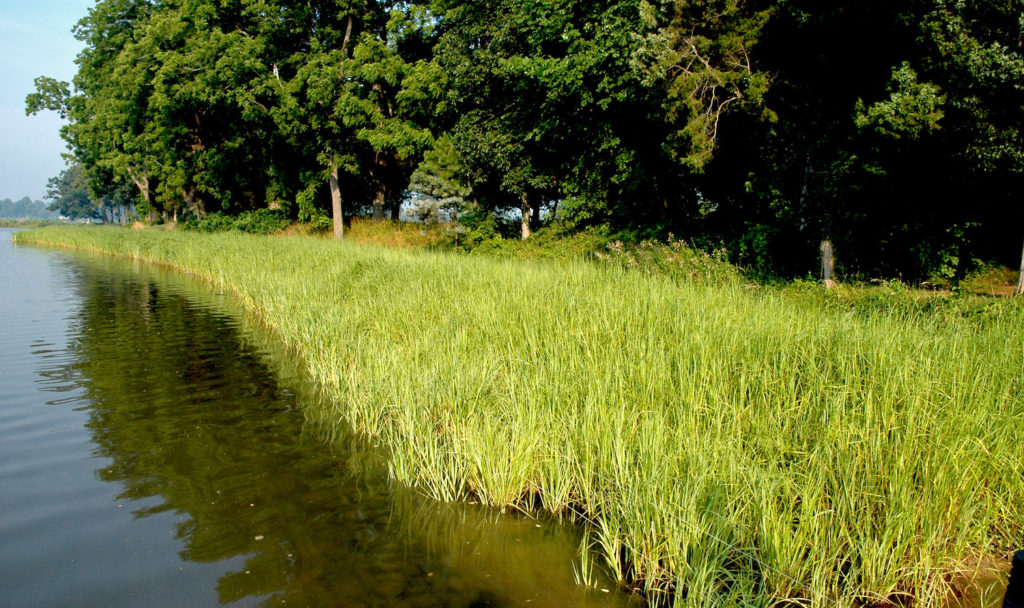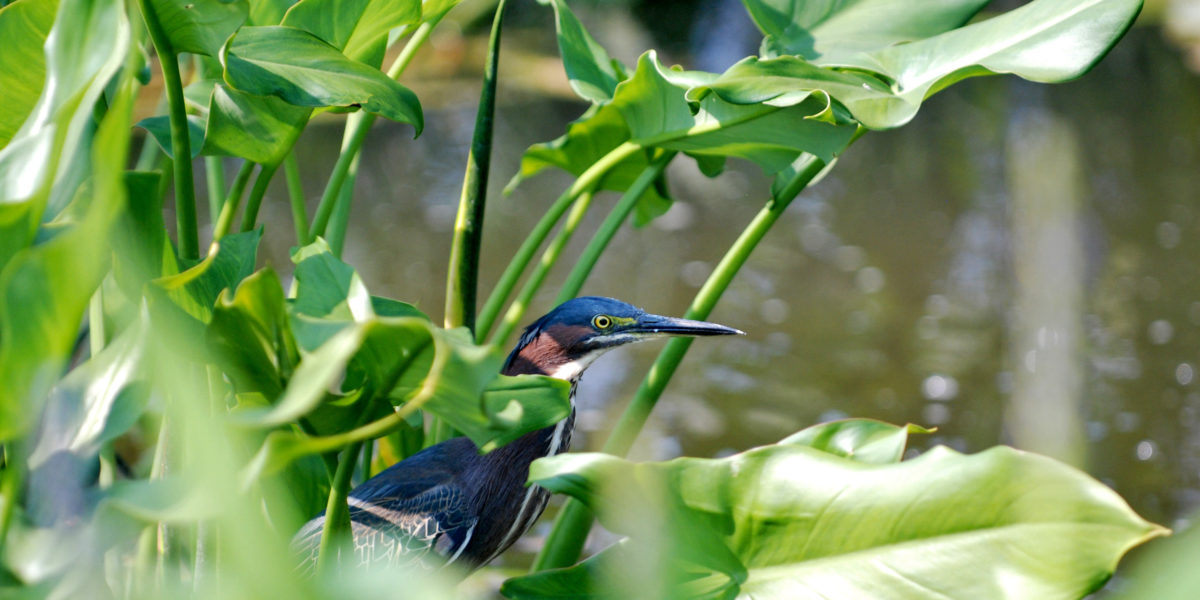When we think about wetlands, we think about the native grasses and wildlife that exist in the coastal areas around our waterways. What we don’t often think about is how these ecosystems function and how they benefit our waterways, wildlife, and our quality of life. When our wetlands thrive, they improve water quality by filtering pollutants, provide crucial habitat for thousands of aquatic and terrestrial plants and animals, and control erosion along our shorelines.
But the public only began to understand the value of wetlands starting in 1972 with the passing of the Clean Water Act (CWA). “Before that, wetlands were thought of as buggy, mosquito-ridden swamps that served no purpose,” says Suzanne Pittenger-Slear, president of Environmental Concern, a nonprofit in St. Michaels, MD dedicated to the restoration and enhancement of wetlands. “More than half of the nation’s wetlands have been drained and converted to other uses. In Maryland, the loss has been over 50 percent.”

It all started with a hands-on, “boots in the mud” type of guy
Dr. Ed Garbisch founded Environmental Concern in 1972, the same year Congress passed the CWA. This year marks the organization’s 50th anniversary. A hands-on, “boots in the mud” type of researcher, Dr. Garbisch was passionate about restoring wetlands in the Chesapeake Watershed through research and the propagation of native plant species.
“Dr. Garbisch devoted his life to restoring wetlands, and he developed the propagation protocol for many of the native species grown in EC’s nursery,” says Pittenger-Slear. “When the seeds fall off native plants growing along shorelines, they drop into the water and lay dormant throughout the winter before they germinate in early spring. Dr. Garbisch focused his research on replicating this natural process in order to grow the plants required to restore the wetlands.”
Today, EC’s mission is built on Dr. Garbisch’s research and remains science-based and fact-driven. Its funding comes not primarily through donations, but through its restoration of wetland habitats, both tidal and non-tidal. EC also generates revenue through the sale of native plants from its native plant nursery, now growing more than 120 species. These include the two grasses most used in restoring coastal wetlands: Spartina alterniflora (cordgrass), which grows from mid- to mean high tide, and Spartina patens (salt meadow hay), which grows above mean high tide. EC’s nursery sells to other nonprofits and wholesale customers throughout the year, as well as to the general public during its spring and fall retail native plant sales.

The importance of restoration and living shorelines
The history of Hambleton Island helps to illustrate the importance of these restoration efforts and why they remain core to EC’s mission. During Dr. Garbisch’s time, the island was about to breach, and he and his team designed and planned the work to prevent the island from splitting into two landmasses. “They had to take everything to the island on a barge,” says Pittenger-Slear. “They planted over 250,000 plants and replanted the breach in the island. What is so remarkable is that now, while much of the island has been lost through erosion, the portion that remains is the area that was restored.”
Hurricane Isabel also played a role in educating homeowners about the function and value of living shorelines. Before Isabel, Pittenger-Slear explains, many homeowners relied on riprap to protect their shorelines from erosion due to wave action and storm surges. In September 2003, when hurricane Isabel blew through Maryland, communities were hit with an eight-foot storm surge.
“The storm waters washed out banks behind riprap and caused this ‘hardened protection’ to break down and disappear into the waterways,” she says. “Since then, [many] homeowners have made the decision to replace their riprap and bulkheads with vegetated shorelines or to restore their shorelines using native plants, now commonly referred to as living shorelines.”
Other examples of EC’s work include the restoration on Elliott Island, creating approximately 20 acres of marsh habitat planted with more than 400,000 Spartina alterniflora and Spartina patens grown in its nursery; and many private residences, such as one along Edge Creek, where it eliminated the threat to the home by creating a living shoreline, eradicating invasive reeds (phragmites), and installing a bioretention facility. EC’s projects can also be found on San Domingo Creek, Walton Beach Nature Preserve, Stifel Farm, Island Creek, Paw Paw Cove, and Ordinary Point.
In addition to its wetland restoration work and propagation of native tidal and upland plants, EC also offers a wide variety of community education, including special programs, events, workshops, and academic experiences.
Want to get your hands and feet in the mud? Need more information on living shorelines? Get involved with Environmental Concern at www.wetland.org.
Sustainably,
Bobby Firestein
For our 2022 Ecoprint calendar, Protecting the Natural Beauty of the Chesapeake Bay, we have partnered with 13 different organizations, all dedicated to helping solve the environmental challenges in this important ecological hub. Environmental Concern is our featured partner for the month of May To get your own 2022 Ecoprint calendar, click the button below.

